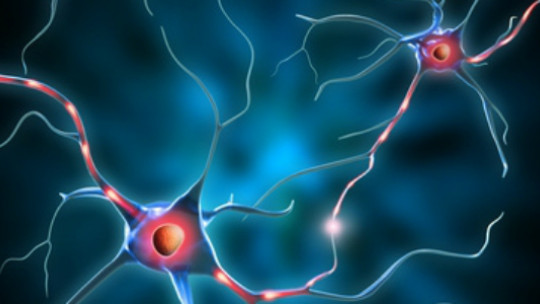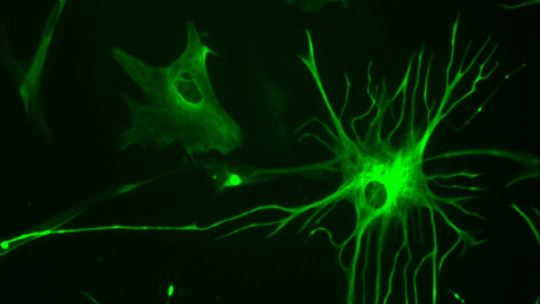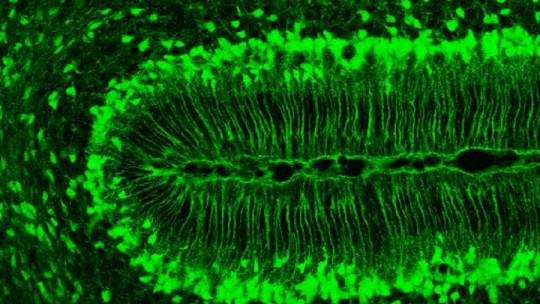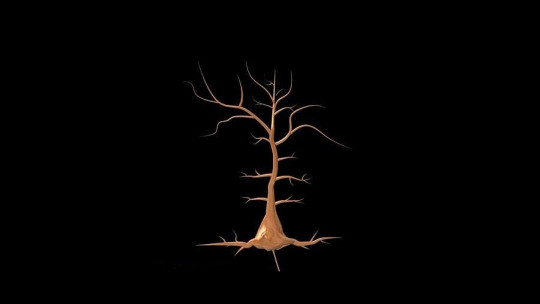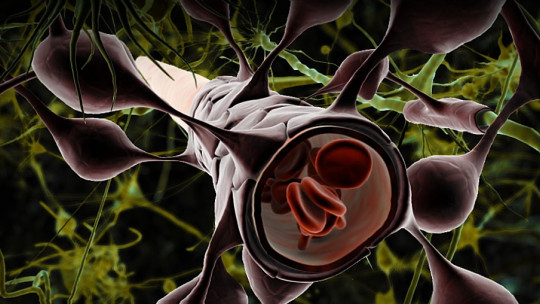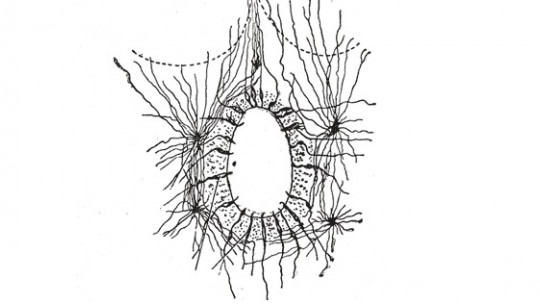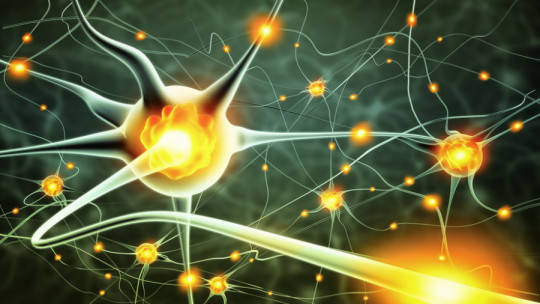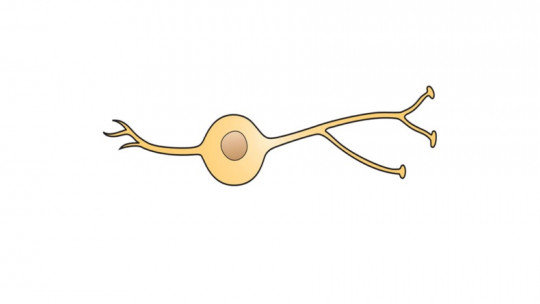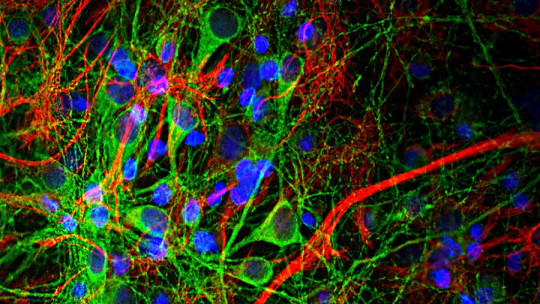It is common to refer to neurons as the basic units that, together, form the nervous system and the brain that is included in it, but the truth is that there is not only one class of these microscopic structures: there are many. types of neurons with different shapes and functions.
The different types of neurons: a great diversity
The human body is made up of 37 trillion cells. Most of the cells in the nervous system are glial cells, which in fact are the most abundant in our brain and which curiously we tend to forget, but the rest of the diversity corresponds to the so-called neurons. These nerve cells that receive and emit electrical signals interconnect, forming communication networks that transmit signals through different areas of the nervous system through nervous impulses.
The human brain has approximately between 80 and 100 billion neurons Neural networks are responsible for carrying out the complex functions of the nervous system, that is, these functions are not a consequence of the specific characteristics of each individual neuron. And, since there are so many things to do in the nervous system and the functioning of the different parts of the brain is so complex, these nerve cells also have to adapt to this multiplicity of tasks. How do they do that? Specializing and dividing into different types of neurons.
But before we begin to explore the diversity of types of neurons, let’s see what they have in common: their basic structure.
neuron structure
When we think about the brain, the image of neurons usually comes to mind. But not all neurons are the same because there are different types. However, Generally its structure is composed of the following parts:
You can learn more about myelin in our article: “Myelin: definition, functions and characteristics”
One of the parts into which the axon divides and which is responsible for transmitting the signal to other neurons is called the terminal button. The information that passes from one neuron to another is transmitted through the synapse, which is the junction between the terminal boutons of the sending neuron and the dendrite of the receiving cell.
Types of neurons
There are different ways of classifying neurons, and they can be established based on different criteria.
1. According to the transmission of the nervous impulse
According to this classification, there are two types of neurons:
1.1. presynaptic neuron
As already said, the junction between two neurons is the synapse. Well then, The presynaptic neuron contains the neurotransmitter and releases it into the synaptic space so that it passes to another neuron
1.2. Postsynaptic neuron
At the synaptic junction, this is the neuron that receives the neurotransmitter
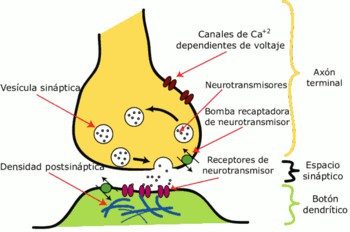
2. According to its function
Neurons can have different functions within our central nervous system, which is why they are classified this way:
2.1. sensory neurons
They send information from sensory receptors to the central nervous system (CNS) For example, if someone puts a piece of ice in your hand, sensory neurons send the message from your hand to their central nervous system, which interprets the ice as cold.
2.2. motor neurons
These types of neurons send information from the CNS to the skeletal muscles (somatic motoneurons), to effect movement, or to the smooth muscle or ganglia of the CNS (visceral motoneurons).
23. Interneurons
An interneuron, also known as an integrative or association neuron, connects with other neurons but never with sensory receptors or muscle fibers It is responsible for carrying out more complex functions and acts on reflex actions.
3. According to the direction of the nerve impulse
Depending on the direction of the nervous impulse, neurons can be of two types:
3.1. afferent neurons
These types of neurons are sensory neurons. They receive this name because They transport the nerve impulse from the receptors or sensory organs to the central nervous system
3.2. efferent neurons
These are the motor neurons. They are called efferent neurons because carry nerve impulses out of the central nervous system to effectors such as muscles or glands
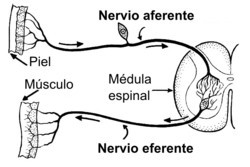
4. Depending on the type of synapse
Depending on the type of synapse we can find two types of neurons: excitatory neurons and inhibitory neurons. About 80 percent of neurons are excitatory. Most neurons have thousands of synapses on their membrane, and hundreds of them are active simultaneously. Whether a synapse is excitatory or inhibitory depends on the type or types of ions that are channeled into the postsynaptic flows, which in turn depend on the type of receptor and neurotransmitter that intervenes in the synapse (for example, glutamate or GABA).
4.1. excitatory neurons
They are those in which the result of the synapses provokes an excitatory response that is, it increases the possibility of producing an action potential.
4.2. inhibitory neurons
They are those in which the result of these synapses causes an inhibitory response that is, it reduces the possibility of producing an action potential.
4.3. Modulatory neurons
Some neurotransmitters can play a role in synaptic transmission other than excitatory and inhibitory, since they do not generate a transmitting signal but rather regulate it. These neurotransmitters are known as neuromodulators and Its function is to modulate the cell’s response to a main neurotransmitter They usually establish axo-axonal synapses and their main neurotransmitters are dopamine, serotonin and acetylcholine.
5. According to the neurotransmitter
Depending on the neurotransmitter released by the neurons, they receive the following name:
5.1. Serotonergic Neurons
This type of neurons They transmit the neurotransmitter called Serotonin (5-HT) which is related, among other things, to mood.
5.2. Dopaminergic neurons
Dopaminergic neurons transmit dopamine A neurotransmitter related to addictive behavior.
5.3. GABAergic neurons
GABA is the main inhibitory neurotransmitter. GABAergic neurons transmit GABA
5.4. Glutamatergic Neurons
This type of neurons transmits Glutamate The main excitatory neurotransmitter.
- You may be interested: “Glutamate (neurotransmitter): definition and functions”
5.5. Cholinergic Neurons
These neurons transmit Acetylcholine Among many other functions, acetylcholine plays an important role in short-term memory and learning.
5.6. Noradrenergic neurons
These neurons are responsible for transmitting Norepinephrine (Norepinephrine) a catecholamine with dual functions, as a hormone and neurotransmitter.
5.7. Vasopressinergic Neurons
These neurons are responsible for transmitting vasopressin also called the chemical of monogamy or fidelity.
5.8. Oxytocinergic neurons
They transmit Oxytocin, another neurochemical related to love It is called the hug hormone.
- Learn more about oxytocin in our post: “The chemistry of love: a very powerful drug”
6. According to its external morphology
Depending on the number of extensions that the neurons have, they are classified as:
6.1. Unipolar or Pseudounipolar Neurons
They are neurons that have a single two-way extension that comes out of the soma, and that acts both as a dendrite and as an axon (entrance and exit). They are usually sensory neurons, that is, afferents
6.2. bipolar neurons
They have two cytoplasmic extensions (extensions) that emerge from the soma. One acts as a dendrite (entrance) and another acts as an axon (exit) They are usually located in the retina, cochlea, vestibule and olfactory mucosa.
6.3. multipolar neurons
They are the most abundant in our central nervous system. They have a large number of entry processes (dendrites) and only one exit (axon) They are found in the brain or spinal cord.
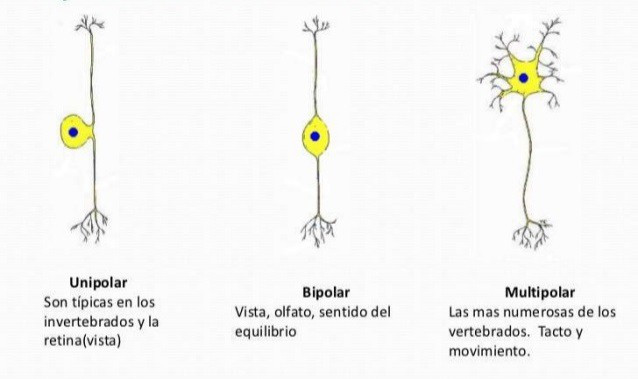
7. Other types of neurons
Depending on the location of the neurons and their shape, they are classified as:
7.1. mirror neurons
These neurons were activated when performing an action and when seeing another person performing an action. They are essential for learning and imitation.
- Learn more: “Mirror neurons and their importance in neurorehabilitation”
7.2. pyramidal neurons
These are located in the cerebral cortex, the hippocampus, and the amygdaloid body They have a triangular shape, which is why they receive this name.
7.3. Purkinje neurons
They are found in the cerebellum, and they are called that because their discoverer was Jan Evangelista Purkyně. These neurons branch, building an intricate dendritic tree and are aligned like dominoes placed opposite each other.
7.4. retinal neurons
They are a type of receptive neuron that take signals from the retina in the eyes.
7.5. Olfactory neurons
They are neurons that send their dendrites to the olfactory epithelium, where they contain proteins (receptors) that receive information from odorants. Their unmyelinated axons synapse in the olfactory bulb of the brain.
7.6. Neurons in basket or basket
These contain a single large apical dendritic tree, which branches in the shape of a basket. Basket neurons are found in the hippocampus or cerebellum.
In conclusion
In our nervous system there is a great diversity of types of neurons that adapt and specialize according to their functions so that all mental and physiological processes can develop in real time (at dizzying speed) and without setbacks.
The brain is a very well-oiled machine precisely because both the types of neurons and the parts of the brain perform very well the functions to which they are adapted, although this can be a headache when it comes to studying and understanding them.
- Djurisic M, Antic S, Chen W, Zecevic D (2004). Voltage imaging from dendrites of mitral cells: EPSP attenuation and spike trigger zones. J Neurosci 24 (30): 6703-14.
- Gurney, K. (1997). An Introduction to Neural Networks. London: Routledge.
- Solé, Ricard V.; Manrubia, Susanna C. (1996). 15. Neurodynamics. Order and chaos in complex systems. UPC Editions.

